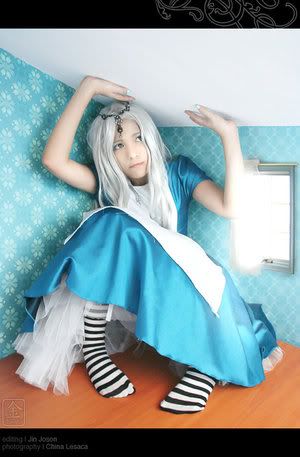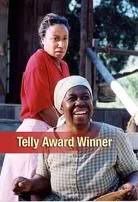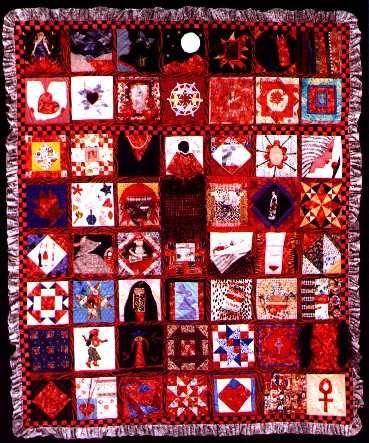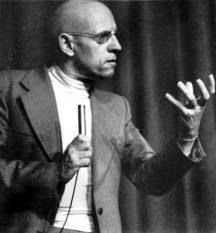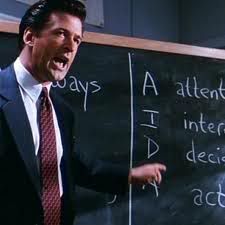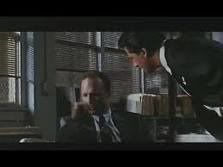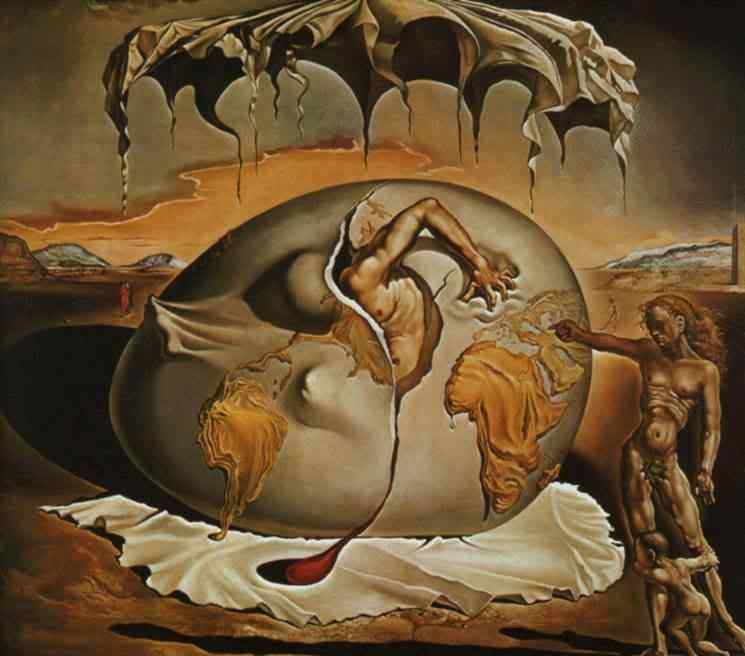Sigmund Freud demonstrates his understanding of what it is to be uncanny in his work "The Uncanny." He uses the German words "heimlich" and "unheimlich" to show their opposition and illustrate the uncanny. To be "heimlich" is homely, while what is "unheimlich" is the opposite causing eerie, unfamiliar, and sinister feelings (McCallam 135). Freud states "What interests us most...is to find that among its different shades of meaning the word ‘heimlich’’ exhibits one which is identical with its opposite, ‘unheimlich.’ What is heimlich thus comes to be unheimlich," exhibiting that what is familiar may also become unfamiliar (2). Heimlich and unheimlich therefore show the way in which something can be uncanny by being both something homely and something eerie. When a familiar subject is transcribed into a different context or environment the subject may appear to be "unheimlich," or disturbing.
In, surrealist director, Svankmajer's film Alice, a young girl climbs into a drawer and enters a strange world of despair and inaniment objects possessing life. A few of the characters in this film that really caught my attention were the socks and the white rabbit. The socks took on independent motion and drove holes into the wooden floor. Even Alice's own socks gained motion and attempted to detatch themselves from her to drill holes with the others. A sock is normally known to be inaniment and unmoving. The fact that the socks take on life and make loud drilling sounds, signifying power tools, is an example of the uncanny. As well having the imagery of a whole room filled with socks that appear similar to snakes, while making extremely loud drilling noises, makes one unnerved. In this moment the element of the uncanny is taking control over one's emotions and causing them to feel their familiar socks turn into cringingly strange beings.
Also, the white rabbit from the very beginning was a peculiar stuffed animal. This rabbit became the most uncanny being in the entire film in my point of view. First off, the rabbit is depicted in a glass case held down by a pole. This makes one wonder why a stuffed animal is restrained so much from the outside world, almost as if he is meant to be contained. This rabbit does not dissapoint when he thrusts himself from the pole and crashes through the case. Though, when he does escape the pole's hold upon him, he sheds wood shavings rather than cotton and through out the film has to eat these wood shavings. When he eats the wood shavings he makes awkward and loud slurping sounds as well as chomping down his teeth as soon as he see's Alice. These violent acts, peculiar materials, and disturbing sounds make for an uncanny character. He is a stuffed animal, and by social norms he is known to be a amiable fuzzy friend to young children. Instead this animal breaks through Alice's glass encasement and chomps at her while she chases him giving an eerie tone to the film and to the viewer. As well, the thing I found most disturbing about the white rabbit was his occupation and use of sisscors. Instead of serving the purpose of being a toy for a child, he was a minion for the Queen of Hearts who literally cuts of the heads of other cards in the film. He demonstrates an unfamiliar act for a stuffed animal who can almost be catagorized as a religious symbol, being an easter holiday traditional present.
With all the odd activity in this "drawer" land, one would believe it unsuitable for a young child. Alice's expressions and reactions to the characters in the film are one of curiousity and disturbance. It seems as if Svankmajer cast a young naive girl to be shoved into a disgusting, creepy, and uncanny world and let her react naturally rather than giving her a script that entails her expressions. The child is supposed to be percieved as a being of innocence and purity, yet when Alice enters this world it is strange and foreign to see such a young girl experiencing these events. The child representing a symbol of innocence is a very romantic idea that modern society still upholds. William Blake illustrates this romantic idea in his poem "Reeds of Innocence," where he describes how he saw a child on a cloud and gained inspiration from him, though when the child vanishes he says, "So he vanish'd from my sight/ And I pluck'd a hollow reed,/ And I made a rural pen,/ And I stain'd the water clear" (1). In this he shows that once the child, the inspiration, the innocence, was gone, he no longer was inspired but "stained" the water "clear," entailing that he corrupted his inspiration and could no longer produce his former thoughts. Therefore a child being put in a corrupt and menacing environment, like Svankmajer has his young protagonist in, evolves the child to be something uncanny.
As well, Svankmajer has Alice become increasingly filthy with dirt, dust, and grim on her dress, face, and socks. Anthropologist Mary Douglas defines dirt: "a matter out of place" (Berthold 4). I speculated a parallel between her definition of dirt and Freud's definition of the uncanny. What is not supposed to be, but is, causes notice and disruption such as something that is dirty or something that is uncanny. Everything in the film is run down, dusty, and filthy, illustrating how having a dirty environment, or matter out of place, makes an uncanny environment for it is something nice and familiar turned unfamiliar and gross. It is very uncanny in that the dust and dirt is put upon an innocent, clean, child. In this I believe Alice's portrayel as a dirty child is symbolizing her corruption of innocence and the development of her becoming part of the uncanny world. In the end of the film, she too states that she would like to cut off the rabbits head if he were to come back, illustrating her innocence being tainted. She is now a dirty child; she is part of the uncanny.
In Del Torro's film Pans Labrynth a young herione is thrust into a magical world with eerie beings and once again objects, or rather plant life, acting in an abnormal manner. She not only has to take on the challanges of this world, but she is also coping with the hardships of her parents world where the Spanish Civil War is taking place. In the world of the civil war, her step father is a vicious demonic human. He will torcher and demolish a person just to satisfy hismself and advance his own success as a war captain. He takes on an inhumane role that viewers are disgusted by; once again bringing up the issue of disgust and dirt for he is a dirty human being metaphorically causing him to be uncanny. A human being, which is very familiar, acting in an inhumane manner, or unfamiliar and astonishing way, causes him to invoke an unnerving reaction from viewers who can sense the dreadfullness of this being. An example of this type of character can be seen in J.K. Rowlings series of the boy named Harry Potter. Harry Potter's arch nemesis is Lord Voldemort, who is an unearthly being and literally rips his sole into seven pieces by murdering innocent civilians. He strikes fear into the hearts of viewers and I, myself, cringe at the sight of him in the film adaptations. In the real world, these uncanny, unfamiliar, and terrible beings are catagorized for example as murderers and rapists. These criminals are feared and reveared as inhumane beings. They are part of the uncanny since they are familiar, yet unfamiliar since they possess qualities that are not transcribed to their species. In Del Torro's film, there is much uncanny in the underground world as well: fairies are eaten by a disgusting loose skinned monster, an infant is prompted to be used as a sacrifice, and a root that acts similiar to a baby is burned to death. Even writing this caused me to take a second look around my room for I am invoked with an awareness of fear. Ofelia, the young protagonist in Pans Labrynth is thrust into both these worlds of terror and trecherous obstacles. Her being an innocent child makes her uncanny in this corruption.


Even in the film Toy Story, there is a toy who was taken to pieces by a neighboring child who strives to cause mischief and disturbance. The toys come out from under his bed and the most disturbing scene is of a baby doll head with wirey hair, one blue eye, and mechanical spider legs. This toy is traumatizing because he invokes sinister terror into one's mind for it was an innocent infant dissasembled and combined with robotic industrial products and disgusting features; once again bringing up the issue of disgust in relation to the uncanny. This toy is uncanny for it is a baby, which is something sweet and known, transformed into an eerie and disturbing monster, which in fact an uncanny being on it's own.
Placing a child in a horror movie or any type of creepy supsense film enhances the film's ability to strike fear into viewers for the child is not expected to be in such corruption or to be corrupt themselves. In the Journal of Popular Film & Television, Chuck Jackson gives more examples of corrupt children in films such as The Exorcist, The Poltergeist, The Bad Seed, and The Omen (1). Each of these films illustrates a child, an image of innocence, corrupted and wreeping horror. Jackson explores the concept of the child causing shock to viewers in The Bad Seed:
The Bad Seed, I submit, remains a popular referent for the problem of the violent child precisely because of the way in which the film deals with the subject of evil, and because the film is at pains to reverse common-sense assumptions about the connection between innocence, whiteness, and childhood (1).
He states it is to "reverse common-sense assumptions," or to transform what is "heimlich" into "unheimlich." Children become uncanny in horror flicks due to their role in society. Making an innocent child into something evil adjusts the film to be exceedingly scarier illustrating that a child in a corrupt environment, or corrupted by their environment, is uncanny. As well, this branches off to another issue dealing with current events. Children who are violent and wreap havoc upon their environment, or vice versa, their environment wreaps havoc upon them, reaches viewers emotions much more abundantly than if it were an adult. Jackson says upon the killing spree's in the 1990's:
The number of schoolyard killing sprees of the late 1990s totals seven. The following is a list of locations and dates: Moses Lake, Washington (February 1996); Pearl, Mississippi (October 1997); West Paducah, Kentucky (December 1997); Jonesboro, Arkansas (March 1998); Springfield, Oregon (May 1998); Littleton, Colorado (April 1999); and most recently Conyers, Georgia (May 1999). Until the Littleton tragedy, the horrifying spectacle of children who kill seemed most crystallized as a national problem in the Jonesboro, Arkansas, case. In Jonesboro, Andrew Golden, an eleven-year-old boy, and Mitchell Johnson, his thirteen-year-old partner, shot and killed one teacher and four students, leaving ten others wounded (2).
These acts appear more horrific than those of the murderers and rapists mentioned previously due to the fact that an innocent child has done these corrupt and inhumane crimes. As well when a child is reared in a broken home and put into foster care, humans feel much more pity upon the child than an adult homeless man. This is due to the child being uncanny in the situation, for the child is supposed to be pure and unexposed to such vulgar circumstances.
In both the films, Alice and Pans Labrynth, a child is portrayed in a corrupted dirty world where they become part of the uncanny due to their role of the innocent in our society. This issue is supported by Freud's concept of the uncanny and the use of the words "heimlich" and "unheimlich," as well as other films such as Harry Potter and the Order of the Pheonix and Toy Story. Romanticists such as William Blake believe the child to be pure and untainted, yet when real events occur such as shootings at schools that belief is contradicted and the child becomes something to be feared for how they be so tainted at such an pure and young age.
Works Cited
Alice. Dir. Jan Svankmajer. Perf. Kristýna Kohoutová. Channel Four Films, 1988. Videocassette.
Berthold, Dana. "Tidy Whiteness: a Genealogy of Race, Purity, and Hygiene." Ethics and the Environment 15.1 (2010): 1-26. General One File. Web. 15 Dec. 2010.
Blake, William. "Reeds of Innocence." Day Poems. Timothy K. Bovee, 2001. Web. 15 Dec. 2010.
Freud, Sigmund. "The Uncanny." "The Uncanny" by Sigmund Freud Part One. Web. 15 Dec. 2010.
Harry Potter and the Order of the Phoenix. Dir. David Yates. Perf. Daniel Radcliff. Warner Bros Pictures, 2007. DVD.
Jackson, Chuck. "LITTLE, VIOLENT, WHITE THE BAD SEED AND THE MATTER OF CHILDREN." Journal of Popular Film and Television 28.2 (2000): 1-11. Film & Television Literature Index. Web. 15 Dec. 2010.
McCallam, David. "Encountering and Countering the 'Uncanny' in Descartes's Meditations." French Studies 57.2 (2003): 135-47. Oxford Journals. Web. 15 Dec. 2010.
Pans Labrynth. Dir. Guillermo Del Torro. Perf. Ivana Baquero. Estudios Picasso, 2006.DVD.
Toy Story. By John Lasseter. Perf. Tom Hanks and Tim Allen. Disney, 1995. Videocassette.








